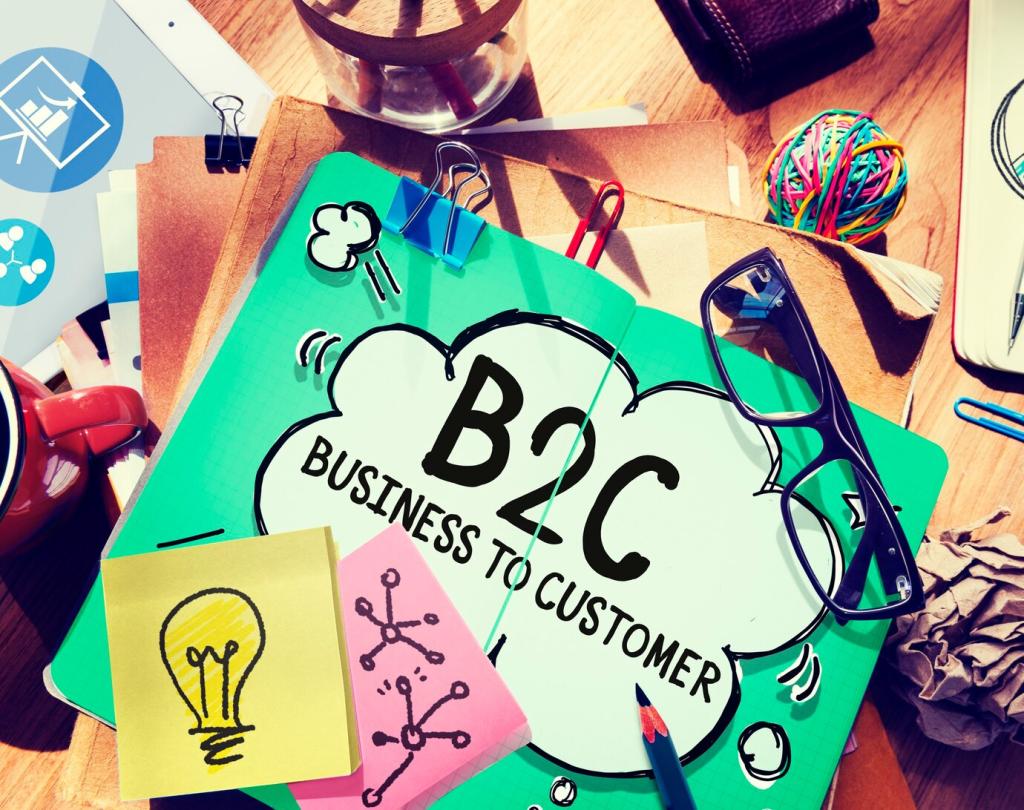Innovative Trends in Omnichannel Marketing
The landscape of omnichannel marketing continues to evolve rapidly as brands seek more cohesive and impactful ways to connect with customers across a multitude of channels. The integration of digital advancements, AI-powered personalization, and interconnected experiences have set a new standard for audience engagement. This page explores cutting-edge trends shaping the future of omnichannel marketing and demonstrates how businesses are leveraging new strategies and technologies to drive growth, loyalty, and seamless interactions in an increasingly connected world.

Hyper-Personalization Through Data Integration
Real-Time Behavioral Insights
The collection and analysis of real-time customer behavior have become a cornerstone of effective omnichannel strategy. By monitoring actions as they happen across platforms, brands can adjust messaging and offers instantly, presenting customers with relevant information when they’re most engaged. This immediacy not only increases the likelihood of conversion but also fosters a sense of being understood and valued by the brand.
AI-Driven Segmentation
Artificial intelligence is redefining how marketers segment and target audiences. Instead of relying on demographic or broad behavioral categories, AI algorithms analyze vast quantities of data to identify granular patterns and hidden cues. This allows for the creation of targeted campaigns that speak to niche interests, exceeding the capabilities of traditional segmentation techniques and driving stronger emotional connections.
Predictive Customer Journeys
Predictive analytics is empowering marketers to map out probable customer journeys with striking accuracy. By recognizing early signals of intent, brands can proactively deliver content and recommendations that guide individuals toward desired outcomes. The ability to anticipate needs at each touchpoint not only boosts satisfaction but also improves efficiency by reducing wasted communication.

Seamless Integration of Online and Offline Experiences
Businesses are adopting unified commerce platforms that centralize inventory, customer data, and transaction histories across all channels. This eliminates data silos and enables brands to offer personalized recommendations, enable in-store pickup for online orders, and track customer journeys seamlessly, regardless of how a purchase is made. The result is greater convenience and satisfaction for both the customer and the brand.
Conversational Commerce and Customer Service
AI-Powered Chatbots
Chatbots have advanced significantly, using natural language processing and machine learning to simulate intelligent conversations. These bots can handle inquiries, recommend products, resolve issues, and even process orders, all while collecting data that refines future interactions. Their availability around the clock enhances satisfaction and empowers organizations to scale customer support efficiently.
Messaging Apps as Commerce Hubs
Popular messaging platforms are evolving into key shopping channels, letting consumers browse catalogs, receive tailored recommendations, and complete purchases within a single conversational thread. This shift brings commerce to environments where users already spend their time, reducing friction and making shopping feel like a natural extension of everyday communication.
Voice-Activated Engagement
Voice-enabled devices are transforming how brands interact with customers, offering hands-free convenience and personalized experiences. Marketers are creating branded voice applications and integrating voice search capabilities to facilitate product discovery, make recommendations, and answer queries. This technology paves the way for more intuitive and accessible omnichannel interactions.
Visual Search and Shoppable Media
Image Recognition for Product Discovery
Users increasingly expect to search for products by uploading photos instead of typing keywords. Image recognition tools analyze photos to identify brands, styles, or similar items, making product discovery more engaging and precise. For marketers, this opens up innovative avenues for connecting with visual-first audiences and driving discovery outside of conventional website structures.


Shoppable Social Content
Social platforms have revolutionized the path to purchase by integrating direct buying options into posts, stories, and videos. Brands are creating immersive content that not only entertains but also enables instant purchasing. As social commerce grows, the lines between inspiration and transaction blur, driving higher conversion rates through highly engaging, in-context shopping experiences.
Previous
Next
Advanced Attribution and Analytics
Marketers are adopting multi-touch attribution models that provide a holistic view of how each interaction—across digital and physical channels—contributes to conversions. These unified models leverage advanced algorithms to track customer paths and assign value to each step, offering deeper clarity on what truly drives revenue and engagement.

Automated systems now dynamically select and deploy creative assets based on individual customer profiles and behaviors, ensuring that communications remain relevant and timely. These platforms monitor engagement, optimize content formats, and iterate based on performance, reducing manual workload while improving message impact.

Marketers are leveraging advanced workflow engines to synchronize campaigns across email, social media, SMS, and in-store touchpoints. These technologies ensure that messaging, promotions, and branding remain consistent, regardless of where the customer engages. By automating workflow coordination, brands maintain control while delivering experiences that feel effortless for the customer.
Timely engagement is made possible through triggers based on user actions, environmental cues, or lifecycle milestones. Automation platforms monitor these signals, initiating personalized communications or offers as soon as predefined conditions are met. This allows brands to proactively nurture leads and deepen relationships without overwhelming their marketing teams.

Transparent Communication Practices
Brands are ensuring that messaging remains honest and clear across all channels, addressing not only features and benefits but also environmental impact and ethical sourcing. This openness builds credibility and resonates with increasingly values-driven consumers, turning transparency into a competitive advantage in crowded markets.
Ethical Data Collection and Usage
Heightened awareness of data privacy has pushed brands to adopt more transparent and consensual approaches to collecting and utilizing customer information. Innovative consent management tools, clear messaging about data usage, and thoughtful personalization that respects boundaries all contribute to healthier, trust-based customer relationships.
Eco-Friendly Fulfillment and Delivery
Sustainable packaging, carbon-neutral shipping, and local fulfillment centers are becoming key trends in omnichannel logistics. Brands highlight these initiatives in their marketing to appeal to eco-conscious shoppers and differentiate themselves. By aligning operational practices with ethical messaging, companies reinforce their commitment to a better world and a loyal customer base.
